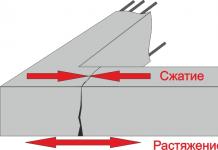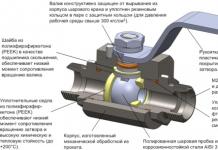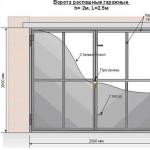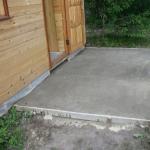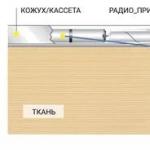The ball valve can be attributed to modern and useful inventions. It is a kind of locking mechanism for the pipeline. Its simplicity, durability and reliability are the main factors due to which the design of the ball valve is widely used both in industrial and domestic environments. At the same time, due to its characteristics, such a crane is in great demand among the population. The device of the ball valve is made in such a way that it contributes to the tight shut-off of not only water in the pipeline, but also oil and gas.
Assembly diagram of a ball valve.
Design features
Ball valves were invented a hundred years ago, but earlier versions of it did not quite tightly block the water pressure, since their design was imperfect and the materials were not reliable enough.
With the advent of artificial fluoroplastic, rubber and many other synthetic substances, the ball valve device has become better, since seals made from them provide excellent sealing and a long service life.
System management has become easier due to the use of high quality lubricants. This largely affects how often repairs need to be carried out (in this case, not soon).
The device of a modern ball valve is quite simple. It consists of a gate - a movable part, which is a steel ball with a round through hole for flow. The hole size matches the pipe diameter.

Scheme of the design of a ball valve.
When the ball turns 90°, the flow is completely blocked. Such an element is called full bore. If the part is open to the end, then there are no hydraulic losses during the circulation of water, which significantly increases the service life of the locking mechanism itself and pipes.
That is why modern spherical structures have replaced their predecessors from all major and significant trunk lines.
In total there are three types of such a product:
- standard;
- full bore;
- incomplete bore.
The throughput of the full bore option reaches 100%, the non-full bore option - 50%, and the standard one - 80%. For manufacturing, brass, various alloys with it, or sufficiently durable plastic are used.
Brass faucets withstand temperature extremes well, have a long service life and do not corrode.
Plastic ball products are less durable and not resistant to high temperatures, so they are used for gas supply or for cold water supply.
When choosing such an element, you must be guided by some rules:

Scheme of a single-lever mixer with a ball mechanism.
- It should be determined what it will be intended for. So, for example, for cold and hot water supply, as well as during the installation of a gas pipeline, brass or steel systems are used.
- It is very important to decide what type of part will be: flanged or welded. The ball valve for welding is installed on lines with a high temperature liquid flow, acidic or alkaline environment. Such a mechanism is able to withstand high pressure and is quite reliable. Flange type (full bore) attached by thread, applicable to liquids and gases, but not in corrosive environments.
- When buying, you need to carefully examine it for defects and complete sets, otherwise there may be leaks and the need for repairs. Kit must include: seal stem, control knob, Teflon seal seats, nuts, steel or brass ball, brass stem, rubber seal stem, brass body, adjusting nut, seal washer.
- There are two types of systems on sale: with a collapsible body and all-welded.
The priority is a crane with a collapsible body device, and this is due to the following advantages:
- Such an accessory is more reliable, since it does not have numerous gaskets, which, when worn out, lead to sudden leaks.
- Their design is quite simple, therefore, the repair does not cause any difficulties, even for a person who is not versed in plumbing.
- These products are very easy to use. To use them, just lower or raise the lever.
- The device has a high degree of tightness, which is achieved due to the tight fit of the ball to the tap.
- Compact unlike all the others.
Scheme of the Mayevsky crane.
A variation of the locking device is the Mayevsky tap (radiator needle air valve), the main purpose of which is to remove accumulated air in radiator batteries.
The device of such a product is somewhat different than plumbing. It is much more convenient than a conventional faucet used to eliminate air jams. Quite often, during the supply of hot water to central heating radiators, air bubbles form, which impede the normal circulation of water. Only the installation of a Mayevsky crane will quickly and easily fix the problem.
It is based on a needle shut-off valve, which is made with a square key and has slots for a slotted screwdriver.
There is also a special valve with a plug, which is necessary for screwing into the top of the radiator. For tightness, a plastic casing is mounted between the valve stem and the screw, which prevents the battery from leaking when the tap is opened.
If the radiator does not warm up completely, this indicates the accumulation of air. To eliminate this, you should open the tap with a special key until a trickle of water appears.
Although ball valves are reliable, for some reason they fail. But only devices with a collapsible body type are subject to repair, and all-welded ones are simply replaced with new ones.
How is the system repaired?
To start preparing:
- spanners;
- a screwdriver (without it, almost no repair takes place);
- pliers.
To repair a faucet, you must:
- Shut off cold or hot water in front of the tap.
- Remove the screw holding the swing arm.
- Remove the lever and unscrew the threaded part with a screwdriver.
- Use pliers to remove the faucet dome and remove the plastic part.
- If a leaking faucet occurs due to wear or clogging of the seal, then it is either completely replaced with a new one or cleaned well.
- The ball is removed from the mount and, in case of visible damage, replace it.
- The seals are dismantled, with the help of which the rotary part is fixed. All springs and seals are removed with a flathead screwdriver.
- If the gaskets are deformed or damaged, new ones are installed.
Upon completion of the repair of the ball valve, it is assembled in the reverse order, while applying a thin layer of lubricant. Lubricants from different manufacturers may differ, therefore, it may not be suitable for a certain type of ball valve, which will lead to its breakdown.
The repair of the ball valve is completed by checking the tightness of all elements and connections, for this it is connected to the water supply and tested.
A ball valve is well known to our ancestors, but this element has received wide distribution not so long ago. Previously, the ball valve has lost its relevance due to design flaws and the use of low-quality materials, but now, using modern materials (rubber, fluoroplastic), designers got rid of old problems. These materials are used as sealants, which provide reliability in sealing joints and have a high service life. Using high-quality lubricating solutions, there is no strong friction of parts, so using a ball valve is quite easy and convenient.
Five types of ball valves
There are five types of ball valves. They share:
All-welded
All-welded ball valves are inexpensive, reliable and require little maintenance. They are most often used in boiler houses and heating networks.
collapsible
Collapsible cranes are tightened with special bolts. Inside the tap there are seals, due to which, complete tightness is created. If necessary, it can be disassembled and repaired. These cranes are expensive in cost and are most often used in industrial facilities.

full bore
A full bore ball valve consists of a steel ball valve with a round hole in the middle (to pass the flow of water). The diameter of the sealing hole depends on the inner diameter of the pipe.

with floating ball
In this type of valve, the control and locking valve is in the form of a ball. If you rotate the ball 90 degrees, you can completely block the flow. Such taps are widely used in urban gas supply and water supply systems.

with fixed ball
In this type of crane, the shutter is also spherical. Unlike the crane described above, this valve is rigidly fixed on the shaft axis and does not move in the body.

By opening the ball valve, you can forget about the loss of water. As a result, the pipes in the locking mechanism do not wear out. Such faucets have almost completely replaced existing faucets in everyday life. You can install or repair a ball valve yourself, the main thing is to know how it works and what it consists of.
There are also three types of ball valves depending on the throughput. Among them: a full bore faucet with a capacity of 90-100%, a standard faucet with a pass of 70-80% and a non-full bore faucet with a pass of 40-50% of water.
They are made of stainless steel, brass and high-strength plastic. The material brass has good resistance to temperature changes, thereby counteracting the occurrence of rust. The material plastic has less strength, so it is susceptible to high temperatures. When using a faucet for hot water and heating systems, choose a device made of brass. The operation of such valves does not lose tightness for 50 or 60 cycles. When using a faucet for gas or for cold water, it is better to choose a material made of plastic.

A well-functioning water supply system is a modern system, suitable for expansion and modification. Gone are the days when people made do with a few welded pipelines. Now in any private house, plumbing cannot do without various fittings and water taps.
In this article, we will consider water taps, as one of the most important, found almost everywhere, their types and features.
Article content
Purpose
A water tap is a small shut-off mechanism that performs extremely important functions. The standard sample performs a rather trivial, but at the same time absolutely necessary task for the functioning of the pipeline - it controls the movement of the carrier inside the pipes.
There are situations when the pipeline must be partially or completely blocked, cut off one or more branches from the water supply. There are many reasons for this, ranging from the banal breakdown of plumbing fixtures, and ending with major destruction in the system.
In any case, a breakdown threatens to flood the house or apartment, so it is better to immediately turn off the water supply in order to protect yourself.
You can also turn off the water at the entrance to the main, but then you completely cut yourself off from the water supply for the duration of the repair (which, to be realistic, can be delayed).
That is why any more or less decent length pipeline is divided into logically understandable sectors or branches, isolating each segment with the help of these same cranes. This approach is better and safer than the standard assembly, although a bit more expensive.
One single turn of the faucet handle completely shuts off the water supply in a particular area. If desired, a water tap can be installed not only on individual branches, but in general at the entrances to any plumbing unit.

In this case, a breakdown, for example, in a water folding mechanism or at the inlet to a water heater is easily and simply eliminated. It is enough to turn the tap and .
Note that different types of water taps are used not only to isolate the branches of water supply systems. There are other appointments as well. For example, modernization of the heating system, when taps are placed at the entrances to radiators or to the underfloor heating system in order to be able to quickly remove or replace the device in the future.
An equally popular option is that acting as a turnout valve, that is, redirecting the flow of water from branch to branch.
Don't forget about the faucet. The best way to get an idea of how a faucet works is by looking at your bathroom sink. It stands in any bathroom, and only thanks to it you can comfortably enjoy the benefits of civilization.
General principle of operation and design
There are different types of taps for plumbing, but they all have common design elements. Anyway faucet consists of:
- body or general body;
- locking element;
- pens;
- seals.
It does not matter whether we are considering valves, a tee with a tap, a tap or any other of its varieties. In any case, they will not do without the four elements described above, although most likely, these elements will differ from each other.
The body of the crane depends on what specific task it is engaged in. A conventional coupling sample is, in fact, built into the body of the coupling itself. An angle valve has an angle body, because its task is to form corner connections, for example, at the entrances to heating radiators.

The tee has a different body. The tee consists of a branched coupling, which is obvious. Water folding solutions can be built-in or special. Their body differences are much more significant.
The locking element in the tap is the main part. It is with his help that it is possible to stop the flow of water. In civilian cranes, ball mechanisms or are used as locking elements.
The handle at the crane is ordinary and necessary for control. If considered, then in it the handle can be in only two positions: closed, open. In gate valves, instead of a handle, a valve is mounted, and the mechanism is controlled by its spiral rotation.
As for the seals, not a single working mechanism in plumbing can do without them. Rubber gaskets are used as seals. In taps, the transitions between the locking element and the body are sealed.
Types and differences
Considering the types of such mechanisms, first of all, you need to pay attention to their division according to the type of locking mechanism. It is exactly whether the ball valve is in front of us or affects its use in the future.
So, in the faucet locking element can be:
- ball mechanism;
- valve.
In the first case, we consider the most common and popular in our time. Ball, means that the ball mechanism acts as a locking element in it.

It is a spherical part with a through hole cut inside. The hole is on the same spherical plane. Accordingly, it passes water only in one position.
We turn it in a different direction and water is completely blocked. It is thanks to such a concise scheme that everything works. In the closed position, the ball mechanism is turned with a blind side to the flow, eliminating fluid pressure. In the open position, a hole in the ball becomes parallel to the flow, which allows the carrier to be transported freely through the pipes.
Valves are slightly different from ball valves, because they have a different locking element and other functions. best used as a regulator of flow states. However, it cannot be set to an intermediate position. It will be either closed or open, there is no other way.
With valves, the situation is different. The locking element in them is a valve that can be in different positions, from fully open to fully closed. The valve is adjusted by turning the knob, therefore, it can be finely tuned. Gate valves are bought when it is necessary not only to be able to open or close water, but also to adjust its amount.
Analysis of the properties of a water ball valve (video)
Division by purpose
Also, similar products are divided according to their intended purpose. Here there are already much more differences and they relate to the basic functionality of a particular part. For example, there are cranes:
- Standard.
- Corner.
- Tees.
- and waterworks.
The species mentioned above are just the tip of the iceberg, but they are the most commonly used in the work, so they are best suited as candidates for consideration.
Standard stopcocks, as a rule, are equipped with ball mechanisms and are ordinary bulkheads for isolating individual sectors of water supply systems. They consist of, mainly metal. Such products are mounted on all heating and water supply systems without exception.
Corner mechanisms - the essence is the same as the standard ones, only instead they have a body curved 90 degrees.

A tee with a locking mechanism performs slightly different tasks. A tee is a fitting that has not two, like a conventional coupling, but three outlets. A tap is placed on a tee mainly in order to be able, if necessary, to redirect the flow from one branch to another.
The tee is used in heating systems, especially modern ones, where temperature sensors constantly monitor the level of the thermal carrier and if necessary, mix it with heated water.
The water folding mechanism is the essence of the same faucet, but with a valve as a regulator. The simplest water folding mechanism is placed on pipes to regulate the flow force. You can see a faucet in any bathroom. It is, as a rule, combined with, creating sink faucets familiar to the eye.
When choosing products of this type, you should be guided by the working conditions at your site. There are no universal solutions in plumbing. All of them are good, and all are intended for some kind of their tasks.
For example, a ball water flow blocker should be used in pipelines for situational isolation of individual branches of a water supply system. It is impossible to buy it instead of cranes with valves. Although they are cheaper, they are not designed to regulate the flow force.
At the same time, valves, just for regulation, were conceived. The valve cannot be closed in a fraction of a second, but it can be left in the half-closed position for a long time, without any negative effect (the ball mechanism wears out quickly in the half-open position).
The owner of an expensive water supply system with integrated heating cannot do without tees, and tees with shutoff valves can also be selected automatically. There are cranes with and sensors that can independently switch using a conventional relay.
I recommend paying attention to the material from which the faucet is made. It must match the material of the pipe. We take metal for metal, plastic for plastic. Of all the variety of metals, it is best to buy. It does not conflict with steel and copper, and has excellent performance.
Monday, 23 April 2018, 09:41Company news
A ball universal welded valve is a special device designed to shut off pipelines with different media.
This is a universal mounting fixture that can be used in any environment, even difficult ones. High reliability, connection strength allow the use of a ball valve in those places and areas where the flow of coolant is unacceptable. The main areas of use of such devices are the domestic energy sector, industrial networks. They are also mounted in home systems, near radiators or batteries.
Principle of device and operation
Ball valves come in different types. They differ in several parameters, such as the material from which they are made and the diameter. However, the design is the same due to the features of the device model. In a metal case on an axis perpendicular to the pipeline, a special ball-shaped valve is fixed. This item is made of polished stainless steel. An important structural element in this ball is a through hole. The diameter is equal to the internal section of the pipeline. Some models may have slightly less.
When opening, the axis of the holes on the ball and the pipes coincide, which ensures unhindered movement of the carrier through the system. When the shutter is rotated 90 degrees, the stroke is blocked. It turns out that the ball becomes sideways, the deaf side. The hole on the part moves along the axis in a plane perpendicular to the direction of the coolant flow. The movement of the medium further along the system becomes impossible. The reliability of blocking the flow of the coolant is due to the special design. The body is provided with a seal, in the area between the ball and the walls there are fluoroplastic end rings. They provide good downforce with the help of Belleville springs or pinch bolts.

Control Features
The ball valve is controlled by a lever or a gearbox. In this case, the participation of the operating personnel or the user is required, who must, if necessary, turn the handle. There are models on sale, the operation of which is possible when connecting an electric or pneumatic actuator.
Manual control levers are used for valves with a nominal diameter of the hole in the ball< DN125. Если же приспособление характеризуется большим калибром, то применяют редукторный привод. Для управления такими устройствами требуются немалые физические усилия, которые человек не всегда способен обеспечить.
It is important that electric actuators, which are used in work with ball valves of large diameters, are equipped with special mechanisms. They are characterized by a high gear ratio, only in this case significant torques are provided. It should be noted that this feature significantly complicates the design of the drive itself, affects the increase in its cost. Motorized valves are typically used for 2-position control. In this way, it is possible to remotely control devices that are located in remote or hard-to-reach areas of the heating system or heat supply network. In addition, the use of electric drives makes it possible to automate the control of ball valves of large diameters.

Nuances of application
Everyone who installs shutoff valves, including home heating systems, should know about them. In order for them to properly perform their function, these devices cannot be closed / opened uncontrollably. With frequent movement of the ball, its abrasive wear occurs. It ceases to ensure the reliability of blocking the flow of the coolant in the network. Over time, the faucet will begin to leak, which will require system repair, replacement of this device.
It should be understood that a faucet is a shut-off valve. It is not designed to proportionally control the medium flow to or from the heat exchanger. It is also unsuitable for work with incomplete rotation of the check ball. This mode of operation also provokes rapid wear of the part.
Found an error - highlight and click Ctrl+Enter
Today, ball valves are widely used in water supply systems. Due to the simplicity of their design, they are able to please the owner with reliable work for many years. At the same time, their process exploitation extremely simple. Due to the fact that the locking element in them is a ball, the process of turning the valve is performed without undue effort. To do this, simply turn the lever through an angle of 90°. No need to count turns or wait for a stop in order to make sure that the valve is fully locked.
Varieties
Ball valves are gradually replacing other common types: sliding, conical and cylindrical. Their basis is a ball, which is used as a locking element. During rotation, the contact of the moving element with the seals of the coupling remains unchanged. Water is passed through due to the fact that a hole is drilled inside the ball. Such taps are used in domestic heating and water supply systems.
There are several species ball valves:
- welded;
- polypropylene;
- coupling;
- coupling full bore.



Welded and flanged
Welded valves are fixed by welding, as a result of which it is impossible to dismantle them. Flanged are used in pipes of wide diameter. When installing them, additional gaskets are placed to seal the joint. Due to their high tightness and support for high pressure operation, they are used in gas pipelines and oil pipelines. They are also widely used in the urban water supply system.
Polypropylene
 Polypropylene valves are made of polyethylene and polypropylene. They are widely used in aggressive environments, where metal structural elements degrade very quickly. From hot water, they undergo deformation, so they try not to use them in heating systems. In domestic conditions, valves made of polypropylene with a metal locking element are still used.
Polypropylene valves are made of polyethylene and polypropylene. They are widely used in aggressive environments, where metal structural elements degrade very quickly. From hot water, they undergo deformation, so they try not to use them in heating systems. In domestic conditions, valves made of polypropylene with a metal locking element are still used.
During installation, they are immediately welded to the plastic pipe. It turns out like this hybrid option: polypropylene, welded. They can already be used in heating systems. Such valves have become widely known relatively recently, thanks to the widespread installation of heating and water supply systems made of polypropylene.
Coupling
Union valves are used for narrow pipes. Their diameter does not exceed 2 inches. Being compact, they are located in a wide variety of water systems. The coupling valve is most common in domestic structures. To shut off the flow of water, simply turn the valve handle. In industrial installations, they are made of steel. For domestic needs, a more economical material is suitable: brass. Whichever implementation option is chosen, the key pros, associated with the use of a ball element, remain common to them:
- high reliability;
- ease of operation;
- rust resistance;
- tightness;
- ease of installation.
The full port version of the socket valve avoids bottlenecks in the flow of water. Structurally, it is wider and the hole in the ball corresponds to the inner diameter of the pipe. It costs more and weighs more.
Structurally valves consist from the following elements:

The handle is made of nickel. It is performed both in the form of a butterfly and in the form of a long lever. In the second case, an additional plastic sheath is put on the handle. It is especially important on taps for hot water: it acts as a heat insulator. The wedge-shaped nut fixing the fitting is made of steel.
The body itself is made of brass. It provides long service life and is able to withstand the pressure of domestic water systems. The brass body, unfortunately, is not always made only from its own alloy. Often there are impurities in cheap specimens, and over time they can simply crumble. The outer part is covered with nickel. Therefore, high-quality faucets do not always have the yellow color characteristic of brass.
 The sealant is heat-resistant teflon. For the most expensive models, butadiene rubber can also be used as a material. The locking ball itself is diamond-cut. The inner part is drilled in the form of a cylinder. It is a wide opening in the cylinder, comparable to the inner diameter of the pipe, that provides good permeability.
The sealant is heat-resistant teflon. For the most expensive models, butadiene rubber can also be used as a material. The locking ball itself is diamond-cut. The inner part is drilled in the form of a cylinder. It is a wide opening in the cylinder, comparable to the inner diameter of the pipe, that provides good permeability.
In one of the positions, the ball is rotated in such a way that its inner cylinder is located in the direction of the water flow, making up the inner surface of the pipe, which is practically even without bends. In another, it completely blocks the circulation of water. Insulation is provided by high-quality joining of the ground surface and the sealing ring.
Characteristics
When choosing a crane, you should pay attention to its key characteristics. The right choice will affect the duration of it exploitation.
patency
The main elements of a ball valve are a ball and a pipe. In this case, the diameter of the through hole of the ball must correspond to the diameter of the pipe. When open, the faucet itself is a solid cylinder. If there is no narrowing between the pipe and the tap, then such a valve is called full bore. He has next benefits:
- there is no loss of water pressure;
- long service life;
According to its characteristics, a full bore ball valve can be considered the best. Despite this, they have disadvantages: significant cost and weight. In order to save money, the passage of the ball valve can be narrower. It is made symmetrically or there is a narrowing on only one side. If the design is asymmetric, then the narrowing is done in the direction of the water flow. Due to this, the consumption of metal becomes less. Flow control requires less effort. But their pass rate is already lower.
Thread and pressure
 Ball valves are attached to the pipe by screwing onto the thread. It can be either in the form of a nut (internal) or in the form of a bolt (external). The latter is properly called a fitting. The tap is called by the type of thread: “nut-nut” (both threads are internal) or “fitting-nut” (one thread is external, the second is internal).
Ball valves are attached to the pipe by screwing onto the thread. It can be either in the form of a nut (internal) or in the form of a bolt (external). The latter is properly called a fitting. The tap is called by the type of thread: “nut-nut” (both threads are internal) or “fitting-nut” (one thread is external, the second is internal).
The pressure of the elements of the plumbing system is measured in atmospheres. One atmosphere - 1 bar. On the crane, the corresponding designation is PN. For example, PN20 means a maximum pressure of 20 bar. As a rule, in normal household constructions, it does not exceed 7 bar in normal use. But always possible overload, so the locking device must have a margin of safety. The minimum PN value for cranes is never lower than 16.
Diameter
The cross sections of the pipe and the faucet do not match to the nearest millimeter. As a rule, shop assistants understand what the customer means when they say, “I need a faucet for a half-inch male pipe.” But in order not to rely on the seller, it is better to know exactly what pipe sizes and diameters are used in conventional plumbing systems. Ball valve diameters meet certain standards.
Most often, ½, ¾, 1 and 1¼ inch pipes are used at home. These dimensions correspond to 15, 20, 25 and 32 mm, respectively. They are measured by the outside diameter. In order to find out the diameter of the pipe, you can measure it with a caliper or define indirectly along the circumference. The circumference must be divided by 3.14. But it should be borne in mind: if the pipe is steel, then there may be several layers of paint on it, which leads to a slight thickening. Therefore, such measurements should be reduced to the nearest size.
On the valves themselves, they most often write what diameter of the pipe they are intended for. Full bore valves have one feature: their thread always matches the diameter of the pipe. This ensures that there is no narrowing of the passage, and, as a result, there are no hydraulic losses. For other valves, depending on the thickness of the pipe, the diameter may vary.
Weak sides
 Despite the many positive qualities, ball valves have their drawbacks. The water of the water supply system may contain various impurities in the form of scale and rust. If for a long time the valve is fixed in one position, then it begins to clog with slag. It can even be postponed even saline deposits. In order to knock down layers from the ball, it must be turned at least once a quarter.
Despite the many positive qualities, ball valves have their drawbacks. The water of the water supply system may contain various impurities in the form of scale and rust. If for a long time the valve is fixed in one position, then it begins to clog with slag. It can even be postponed even saline deposits. In order to knock down layers from the ball, it must be turned at least once a quarter.
The quality of the crane is also not always possible to check when buying. Some specimens begin to leak over time. As a rule, this is due to a poor-quality oil seal. It can be replaced, but often the locking nut turns with the valve. In addition, the crane can only be operated at positive temperatures. If the water in the faucet freezes, then the faucet itself can simply burst.
Faucet selection
The great demand for ball valves has led to an abundance of fakes. Unfortunately, a high price is not always an indicator of quality work. Low quality brass is often used. Make sure is that the body is made of the correct alloy is difficult if the faucet is chrome plated. The body walls must be smooth. Chips, bumps, cracks - all this indicates a low quality product. The cheapest copies can be made from silumin. Such products after a year of work can simply crumble.
Not only the alloy from which the case is made is faked. The ball must be made of brass, but sometimes steel fakes come across. Visually, when viewed, the surface should be bright and smooth. Quality faucets are always accompanied by a certificate and instructions. If the goods are imported, then there must be a translation into Russian. Such products cannot be cheap. When buying, you should carefully check the smoothness of the lever. In cheap fakes, there are instances in which even the lever moves separately from the ball.
Before you decide on the installation location, you should decide what the handle will be. If the valve is in the form of a lever, sufficient space must be left in the installation area. The handle must be free to move. Faucet should be selected the same with pipe diameter. This will avoid excess pressure from water hammer when turned on. If it is not full bore, it should have an arrow in the direction of water flow. Installation should be carried out in the direction of this arrow. After completing the work, it is necessary to carefully check the absence of leaks.
Subsequence the steps for installing the valve on the pipe are as follows.

The most difficult action in the installation of ball valves is threading. There is a typical mistake: if you make more than 5 turns, then garbage will accumulate at the junction. Especially a lot of garbage accumulates on the hot water pipe. Fewer full turns will result in leaks.
